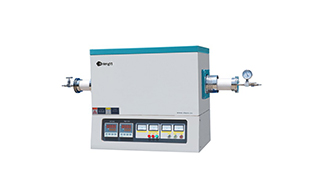Refractory materials are widely used in tube furnace linings. The working principle of the heating furnace is that fuel is burned in the tube heating furnace, and the released heat is transferred to the furnace tube through radiation and convection, and then through heat transfer Transfer to the heated medium. The surface heat dissipation loss of the heating furnace is related to the operating efficiency of the heating furnace, and the insulation effect of the refractory material on the furnace wall directly affects the heat dissipation loss of the heating furnace.
There are three commonly used furnace lining structures for tubular furnaces: refractory brick structure, refractory fiber spray structure and refractory castable structure.
Refractory brick structure includes standard refractory brick and special-shaped refractory brick lining. The advantage is that different types, properties, and grades of refractory bricks and refractory mortar can be selected according to the different working temperature, working conditions, and load of different parts of the furnace. The disadvantages are poor integrity and tightness of the furnace, and low construction efficiency.

Tubular Furnaces
Refractory spray coating structure. Refractory fiber spraying uses a special fiber spraying machine to send the pretreated loose fiber cotton out of the spray gun, and spray it evenly on the inner wall of the furnace through a special fluid conveying device. The advantages of refractory fiber spraying construction technology are fast construction speed, no lining and good air tightness, and it is especially suitable for the construction of complex and special-shaped furnace walls. The disadvantage is that the strength of the furnace lining is low, it is easily damaged by mechanical force during use, the ability to resist air erosion is poor, the construction environment is harsh, and the quality is unstable due to human factors, and it is difficult to ensure the effect of the equipment in operation.
The refractory castable structure is mainly a furnace lining built with refractory materials such as heat-resistant concrete and refractory castables. Its main advantages are good furnace lining integrity and air tightness, long furnace lining life, easy construction and high construction efficiency. The disadvantage is that the refractory must be used within the validity period, and the lining repair is not as flexible as the brick lining.
The reasonable application of refractory materials improves the efficiency of the heating furnace operation, solves the problems of excessively high furnace wall temperature and furnace wall lining falling off, and at the same time eliminates the problem of excessively high furnace wall temperature caused by external measurement of anti-corrosion coating on the wall The phenomenon of peeling and shedding.
评论
发表评论